I have never been to Japan before, except for transit in Narita International Airport on route to United States many years ago. Since Japan is one of those countries where a Malaysian does not need to apply for visa for social visits/tours, I thought it would be a great place to visit for our next family trip in July. Kyoto/Tokyo was my initial choice, but after much deliberation, my wife and I settled for Hokkaido.
Most people associate Hokkaido with winter and skiing. I was pleasantly surprised to know that summer in Hokkaido also has its distinctive charms (colourful farms/gardens, serene lakes and national parks and the ever appealing onsen).
We browsed through various tour guides and websites, and planned our itinerary which covered 14 days. The following is an outline of our trip:
Day 1: Chitose International Airport --> Lake Shikotsu --> Noboribetsu
Day 2: Noboribetsu --> Muroran --> Lake Toya
Day 3: Lake toya --> Onuma --> Hakodate
Day 4: Hakodate --> Matsumae --> Esashi
Day 5: Esashi --> Niseko
Day 6: Niseka --> Cape Kamui --> Otaru
Day 7: Otaru --> Sapporo
Day 8: Sapporo --> Biei --> Furano --> Obihiro
Day 9: Obihiro --> Kushiro --> Lake Akan --> Overnight at Mashu
Day 10: Mashu --> visiting Lake Kussharo, Lake Mashu --> Utoro
Day 11: Utoro --> Abashiri
Day 12: Abashiri --> Sounkyo Gorge --> Sapporo
Day 13: Sapporo (visit Lake Shikotsu and Moses canyon)
Day 14: Sapporo (visit Moerenuma Park and Local Shrine)
Day 15: Home
A lot of driving involved, not uncommonly had to drive for about 2-3 hours non-stop before reaching the next destinations.
Some tips for first time travellers to Hokkaido:
1. most locals, particularly those in rural areas, do not understand English. It is a challenge to order food in the restaurants if the menu does not come with photos, even with the help of Google translate. Many a time, we ordered our food with "leap of faith" kind of feeling. Fortunately, the locals were quite patient and polite even though we were heading no where with our communications. It is generally quite safe to travel free and easy in Hokkaido.
2. speed limits in regular road and expressway are 50km/h and 80 km/h. It is painstakingly slow, particularly when you are driving in a straight road with no vehicles in front or behind you, and your next destination is 100 km away... a true test of your patience. There are a few speed cameras in the expressway, and police manning the main road. In fact, I was hauled over in our last leg of journey in Chitose for driving at 60km/h when approaching a small district (hence, the saying that go with the flow of the traffics ie. driving up to 60km/h in regular road and 100 km/h in expressway may not be true).
3. it was not peak season yet (well, most of the tourist spots were not crowded as far as we could see). However,getting a room in the hotel on ad hoc basis seemed quite difficult. We were unable to get a room for the night at Matsumae (local hotels were full, and was directed to Esashi by a kind hotel manager in Matsumae) and Obihiro (had to drive over one hour in circle, before finally found a place). I eventually had to resort to booking hotel rooms 1-2 nights before our arrival via internet (Agoda, Hotel.com, rakutan).
4. dustbin is not freely available - don't expect to find one in supermarkets, parks and even near the hotel entrances. We had to clear our bags of rubbish at petrol station or in hotel room most of the time.
5. the only way to key in the destinations you wanted to go is by the locations' telephone number. otherwise, you have to key in the search with Japanese Language, even for so called English language equipped GPS system. Hence, it is best to come equipped with the locations' telephone numbers.
6. the toll for using the expressway is rather expensive. It costs around S$10 to drive about 100km along the expressway! The parking in the city is also not cheap, costing over S$6 per 20-30 minutes bloc.
Nevertheless, we thoroughly enjoyed our trip to Hokkaido savouring the seafood, sashimi, onsen experiences and natures (waterfalls, hotspring, volcanoes).
Day 1: Chitose Domestic Airport 千岁机场--> Lake Shikotsu 支笏湖 --> Noboribetsu 登别
We departed early in the morning (1.30am). There is no direct flight from Singapore. We had to transit at Haneka International Airport --picked up our luggages and dropped them off at the check-in counter at Haneka International Airport, then took a free shuttle bus to the nearby domestic airport. The process was quite a brisk. We took the connecting domestic airline, and reached Chitose Airport around 1pm.
 |
| the shopping mall @ Chitose airport |
Initially I wanted to purchase a SIM card for emergency use, but decided against it as the cards only worked with certain phone models, and the rate was not cheap. Retrospectively, this was probably a wise move, as even if we had SIM card with us, we most likley would not be able to communicate with the locals through phone as English is hardly understood by the locals. We rented a Nissan Wingbird Wagon, which was quite spacious and easy to drive (not surprising as it is a 4 wheel drive vehicle).
After picking up our car, we dropped off at one local food chain for lunch, before departing for our tour destination (Lake Shikotsu).
 |
| waiting for food |
 |
| first bowls of ramen in Hokkaido |
Lake Shikotsu is not too far away from Chitose Airport. But because of speed limit (50km/h), it took over one hour just to cover the short distance. And we had to beware of deer that might "fly" out from nowhere:
By the time we reached there, it was over 4pm. The lake itself appeared desolated, with only a few people walking around. The tour boat where you could view the fishes from the cabin underneath was off service. We walked around, snapping a few pictures.
 |
| Lake Shikotsu 支笏湖 |
 |
| 支笏湖 |
We continued on our journey to Noboritbetsu - a tourist town famous for its onsen and smouldering Hell Valley.
 |
| A giant statue welcoming us upon exit from the expressway, signalling our arrival at Noboritbetsu |
 |
| Noboritbesu Dai-ichi Takimoto-kan Hotel: Famed for its vast variety of onsen |
 |
| street of Noboribetsu town quite deserted in the evening |
We took our sumptous buffer dinner in the hotel. We were taught how to eat the crab legs using scissors by an elderly couple sitting next to us in the dining table. I guessed they must have been aghast by the primitive way of crushing the hard shell of the crabs' legs with our own teeth, just to get to the flesh!
After dinner, we went for our first onsen experience - it was indeed an eye-opener. There were a variety of onsen pools (each purported had certain minerals that helped in healing various chronic ailments). No photos allowed - as you have to bare it all when entering the onsen bath facilities. A dip in the hot pool truly refresh, relax and invigorate one's body for the entire night.
Day 2: Noboritbetsu --> Muroran室兰 --> Lake Toya 洞爷湖
The next morning, we visited the Hell Valley, followed by the hotspring lakes and river nearby.
You would understand why it is called Hell Valley 地狱谷- with smoke fuming out here and there from the barren land, and pungent suphur smells smouldering the place.
The hotspring lakes at the hill nearby, and hotspring river for people to dip their legs in (for relaxation).
Hotspring for travelers to rest their aching legs
We then drove towards Muroran, looking of Cape Chikyo 地球岬, arguably the best place to see the Pacific horizon. The GPS led us to a rather desolated place, and fortunately the actual site was just a few meters further down the road.
Here are the photos of Cape Chikyo:
 |
| Ring the bell for peace to the world! |
 |
| the new volcanic mountain Showa Shinzan adjacent to car park, directly opposite Usuzan, still have some smoke oozing out from crevices |
 |
| Walking down the flights of steps was relatively easy, when compared to the task of climbing up on return trip |
 |
| the more adventurous persons may walk along the trail to get near to a volcanic crater; the return trip reportedly need several hours and is definitely not for the faint-hearted or casual travellers |
 |
| View of the volcanic crater |
 |
| View of the newly formed volcanic mountain and adjacent Lake Toya |
 |
| Lake Toya |
 |
| Panoramic view of Lake Toya and volcanic mountain |
 |
| Gondola Ride |
We had a short walk around Lake Toya and its neighbourhood. It was quite deserted for a tourist town. We walked into a boutique restaurant for dinner, and was rather surprised by the tender beef served. After dinner, we strolled along Lake Toya, waiting for the highlight of the night - fireworks display. After having seen so many firework displays over the years, it somehow failed to dazzle me this time round. We went back early to our hotel for onsen, before retiring for the night.
 |
| Lake Toya |
 |
| ChengYee trolling around |
 |
| The ferry that will bring people to the centre of the lake for best view of firework display at night |
 |
| Breakfast in the hotel, with unique mixture of local dishes |
After breakfast, we checked out from our hotel and drove straight to the Usuzan West Craters. One could still see the devastation/destruction left by recent volcanic eruption in year 2000. This place now served as ground zero to educate the public about potential fatal destructive impact of volcanic eruptions, and importance of being prepared in times of emergency. It was quite educational - seeing the remnants of destruction from volcanoes.
 |
| The remaining of tar road (broken into steps with wild grasses growing out from the crevices) |
 |
| A crater created by volcanic eruption |
 |
| some smoke spouting out from the crevices nearby |
 |
| walking along the wooden trail, not forgetting to pose for photo |
 |
| remnant of building buried by the volcanic ashes |
We then walked to another volcanic crater (金昆罗火山口) located opposite West Crater. We thought we could view more residual evidence of volcanic destruction there. But alas, after walking up a gentle slope for about 500m, we discovered that we had to pay over S$12 as entrance fee for a group of three (it was free at West Crater), only could only see a volcanic crater, some vacant apartments left behind after the volcanic eruption in 2000, and Lake Toya, all from a look-out point.
 |
| Vacant buildings left behind |
When we left the lookout point, we overheard a Japanese couple complaining of the entrance fees - they left without visiting the place (as a sign of protest!).
We visited the Volcanic Science Museum nearby to learn more about the history of Uzusan and its series of eruption over the years.
We continued on our journey to Hakodate, stopping at Onuma National Park enroute. We reached our destination Hakodate around 6pm, went straight to the Hakodate-mountain (via cable car), and waited for over 1.5 hour for the world renowned night city view.
 |
| Volcanic Science Museum |
 |
| purchase fresh milk/ice cream from the farm @ Onuma National Park |
 |
| Look at the fully engorged breasts |
 |
| the barn where the milk is being expressed (well that's what the words say!) |
HAKODATE Night View
We left around 7.45pm, together with other tourists who had come to admire the night view. We checked into a budget hotel, which was located just one block away from the morning seafood market! It turned out this was the cheapest hotel we stayed for our entire trip, costing only about $120 for three persons.
Day 4: Hakodate (visit morning seafood market, Goryokaku) --> driving along west coast Oiwake Soran Line --> Matsumae 松前 --> overnight at Esashi 江差
We visited the seafood market 朝市 nearby in the morning, sampled freshly cooked sea urchins, abalone, crab legs and shelf-fish (they were quite delicious, I must admit).
 |
| Posing in front of the gigantic hairy crabs |
 |
| Savouring seafood |
 |
| fortress surrounded by man made canal |
We drove around the city (brief city tour, driving pass some of the historic buildings), stopped for lunch at restaurant next to Red Bricks Warehouse, before heading towards Matsumae castle.
 |
| Red Bricks Warehouse |
 |
| Hakodate Peer |
The drive along the west coast was quite scenic, but it was a very long journey.
The Matsumae castle was quite a disappointment. It has been converted into a small museum, showcasing some of the ancient art works. It looks picturesque from outside, but the surrounding shrines were quite eerie. There was no visitors at all in the shrines. We left in a hurry after a short drive round the compound.
We intended to stay overnight at Matsumae. But alas, all the local hotels were full. Fortunately, a kind manager who could speak English volunteered to book another hotel at Esashi (about 1 hour's drive away) for us! After checking into the hotel at Esashi, we were introduced to a local restaurant for dinner. The sashimi and other local dishes were simply overwhelming!
Day 5: Esashi (visiting old street of Esashi) --> Niseko (overnight stay)
Esashi is a quiet fishing port to the west of Hokkaido. It is quiet and serene, free from the hustle bustles of city. We chanced upon a local cake shop - the bread and cakes were simply mouth-watering. The old port with a replica of warship, and adjacent old street (with some ancient Japanese style architectures lining the street) were fascinating.
Old Houses along the Old Street of Esashi
 |
| Evacuation path during tsunami |
The drive to Niseko was rather long, over 3 hours. It was raining by the time we reached Niseko. We had enough time to stop over at a famous store selling milk products (ice scream, milk cake etc), dropped in to visit the train station which reportedly was build in the style of ancient fabled castle (which turned out to be quite a disappointment), before checking into our lush hotel (One Niseko Resort Tower) for the night.
 |
| Ice cream and various pastries |
Day 6: Niseko 二世谷 -->Cape Kamui 神威岬 and Shimamu Coast岛武意海岸@ Shakotan peninsula 积丹半岛 --> Otaru 小樽
 |
| Breakfast |
 |
| fabulous view from the breakfast lounge |
One should not miss out on two natural icons of Niseko: 神仙沼 and 大汤沼. The former is a lake with tranquil serendipity, exuding heavenly like ambiance, whilst the later is a huge hot spring with smoke emitting from the surface of the hot water (of course it is off limit and not suitable for onsen).
 |
| The boardwalk towards 神仙沼 |
It was a long winding road, going up hills and then downhills before we finally reached Cape Kamui.
Cape Kamui was once a forbidden area of women!
The giant rocks and the crystal clear water were simply amazing at Shimmamu Coast.
 |
| human "dots" on the beach |
However, Otaru was quite a let down. The only place of attraction is the Otaru Canal. We had our BBQ dinner in the adjacent restaurant.
 |
| Otaru canal |
We stayed overnight at Otaru Asari Classe Hotel in Otaru, and depart the next day to Sapporo.
Day 7: Sapporo (Mount Moiwa Ropeway 藻岩山, Hitsujigaoka Observation Hill 羊之丘展望台, Susukino 狸小路, JR Tower, Esta shopping centre)
Visited Hitsujigaoka Observation Hill (load of students around, probably on school trip). Took a snapshot of the statue of the professor who encouraged his students to be ambitious. The view of the Sapporo is beautiful, but pale in comparison to that from Mount Moiwa (our next destination).
 |
| Space ship like sport museum |
 |
| View from Mt Moiwa |
 |
| 情锁 |
 |
| Moiwa Ropeway |
Checked into our hotel (Best Western Fino Hotel) before embarking on a walking tour around Sapporo. We walked to the JR Tower Train station, explored the various boutiques at the underground shopping street, stopped briefly for lunch at the Food Republic (that has several stalls selling Ramen) and ice cream dessert at Ice cream specialty stall, took snapshot of the landmark clock tower and Sapporo TV Tower next to Odori Park, and ended our walk at Susukino (another shopping alley). After spending over 2 hours at Susukino, we had our sashimi-sushi dinner at a nearby restaurant (recommended by our tour book). For once, we took a cab back to our hotel (otherwise, it may take another 1/2 hour for us to walk back).
 |
| JR Tower |
 |
| Sapporo shopping district |
 |
| the iconic clock tower @ Sapporo |
 |
| Odori Park |
 |
| SUSUKINO shopping alley |
 |
| Ice cream specialty restaurant |
Day 8: Sapporo 扎幌--> Biei 美瑛--> Furano 富良野 --> Obihiro 带广
We visited Hokkaido University located just one block away from our hotel in the morning, before departing for the highlights of our trip - gardens/farms and patchwork hill at Biei/Furano.
 |
| Somehow, visiting Hokkaido University feels like visiting Botanical Garden |
 |
| standing in front of Law Faculty |
The tour at Biei was briefly interrupted by a heavy downpour - we went for lunch instead at a restaurant well known for its beef (have to wait for quite a while for our turn). The stew beef was quite tender and delicious.
BIEI
In comparison, the patchwork hill was rather charming in its natural way!
 |
| Patchwork Hill |
We visited only one Lavender farm at Furano, partly due to time constraint and partly fatigue from seeing one too many farms of similar nature.
We wrapped up our tour of Furano after visiting a lookout point from one of the hills, and journeyed on to Obihiro.
 |
| View from Furano observatory point |
We reached Obihiro around 8pm, and was shocked to know that all the hotels were fully booked. We finally managed to locate one hotel after driving around for over 1 hour.
Day 9: Obihiro --> Kushiro 钏路 --> Lake Akan --> overnight at Mashu
The main attractions in Kushiro are cranes (丹顶鹤) and marsh wetland.
Cranes @钏路丹顶鹤自然公园
Marsh Wetland 湿原瞭望台
We had our first taste of truly giant hairy crab at local market.
 |
| getting some more sashimi |
We drove all the way to Lake Akan for a quick tour, before stopping over at Mashu overnight.
Anu Kotan "Pseudo" Cultural Village
Day 10: Visiting Lake Kussharo (with its natural hot springs), Lake Mashu --> overnight at Utoro
 |
| went to the first look out point, but alas it was foggy/misty and couldn't see anything beyond in front of us |
 |
| the castle at the look out point |
Proceeded to Lake Kussharo
 |
| the waves were surprisingly strong, considering it is a lake |
 |
| outdoor onsen - the water is quite warm ~40'C |
 |
| panoramic view of Lake Kussharo |
 |
| Dig a hole out from the beach, and a ready pool of onsen is right there for you to enjoy |


Visited Mount Iwo, which is an active volcano that emits a lot of smoke with pungent smell of sulphur.
 |
| LAKE MASHU |
 |
| Lake Mashu: Panoramic View |
We then drove non-stop for about 2 hours, in time to catch the last boat tour along the western coast of Shiretoko National Park, an UNESCO World Heritage Site.
 |
| Godzilla greeting us at the entrance to the port |
The 70 minutes boat ride was definitely worth it.
One would never see the wild and rugged cliff and its many waterfalls if not for the boat ride.
The photos say it all......
We stayed overnight at the luxurious Shiretoko Hotel.
Day 11: Utoro --> visiting Shiretoko National Park (cover one of the Shiretoko 5 Lakes 知床五湖之第一湖, Kamuiwakka Falls, Iwaobetsu Onsen 岩尾别温泉) --> Shiretoko Pass --> Rausu 罗臼(Kuma no Yu熊之汤)--> Abashiri
Walking trail towards 少女之泪瀑布
 |
| 少女之泪瀑布 |
Walking trail to Shiretoko Five Lakes
 |
| Lake One of the 5 Lakes - the only one that is free |
Kamuikawa Falls
Iwaobetsu Onsen (outdoor in the forest and it's free)
There were two men enjoying the onsen in buff before our arrival!
There were two men enjoying the onsen in buff before our arrival!
 |
| feeling refresh after a dip in the outdoor onsen |
Shiretoko Pass
A view from lookout point @ Rausu
 |
| Outdoor Onsen at 熊之汤 |
 |
| walking towards outdoor onsen |
 |
| refreshed after onsen in the open air (small hut behind, it's free) |
Oshinkoshin Waterfall
Overnight at Abashiri.
Day 12: Abashiri 网走 (visited Abashiri Prison Museum) --> Sounkyo gorge 层云峡 @ Daisetsuzan National Park --> Sapporo
Abashiri Prison Museum was worth a trip - it depicts the living condition of prisoners (most of them reportedly detained for political reasons) who were brought to Abashiri to build the first highway in Hokkaido.
Sounkyo Gorges
 |
| 大函 |
Waterfall of Ginga 流星瀑布
Waterfall of Meteor 银河瀑布
 |
| Sounkyo Ropeway |
I expected more from Sounkyo Gorges - it was not as magnificent as what I thought! (pale in comparison to Wudan Shan in China). The ride in the cable car up the Sounkyo mountain was exciting though, and the view from the top is fascinating.
Day 13 and 14: Sapporo (covering Moses Canyon, Chitose Retail Mall RERA. Moerenuma Park, Hokkaido Jingu Shrine; and window shopping)
Decided to skip Wakkanai. Hence, had some extra time to spare.
Visited Moses Canyon, took the tour boat at Lake Shikotsu, walked around RERA retail mall in the first day, and visited Moerunuma Park and Hokkaido Jingu Shrine on 2nd day.
 |
| Tour boat @ Lake Shikotsu |
 |
| Viewing Deck at basement |
 |
| Log Bear Cabin/Coffee Lounge - featured in Tripadvisor |
Moses Canyon
Hokkaido Jingu Shrine
The amazing Moerenuma Park: it is spacious and awe inspiring - seeing is believing!
Day 15: Home
Our flight stopped over at Haneka Domestic Airport. We realized that we were supposed to take connecting flight from Narita International Airport (which is about 1.5 hour by airport express bus) instead when we tried to check in. Luckily we had just enough spare time to reach Narita Airport 1.5 hour before departure time. Hew! What a relief!





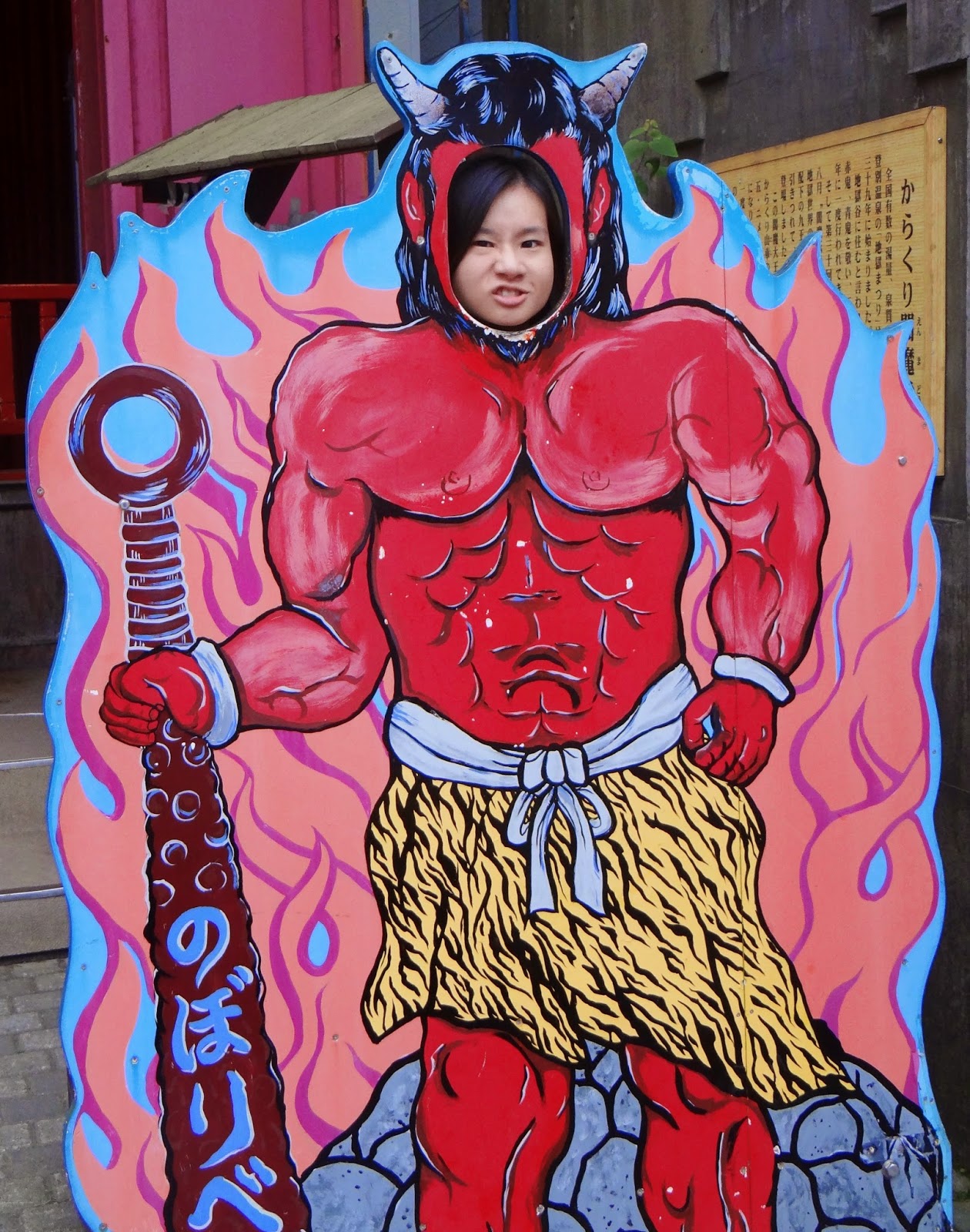





















































































































































































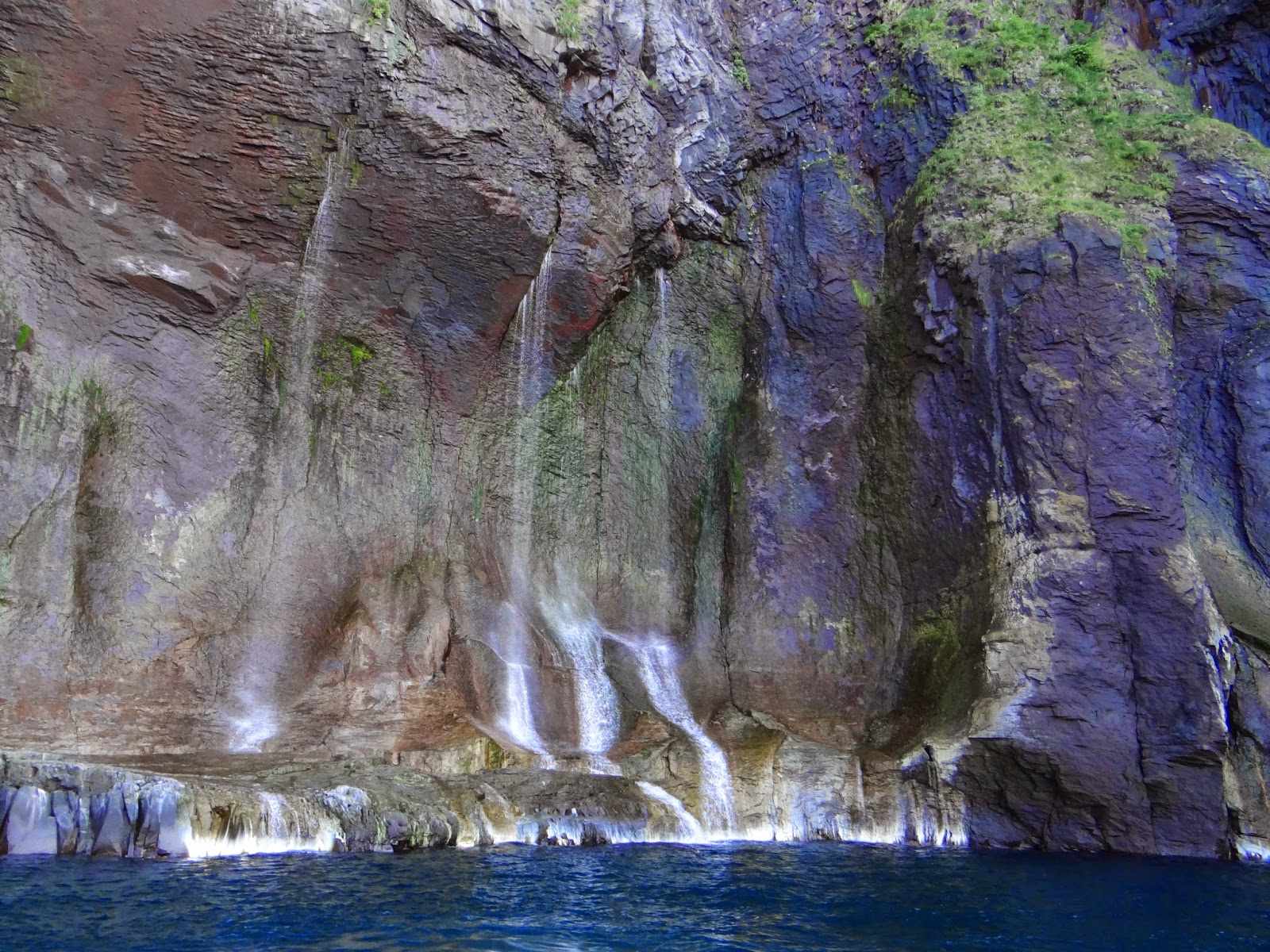













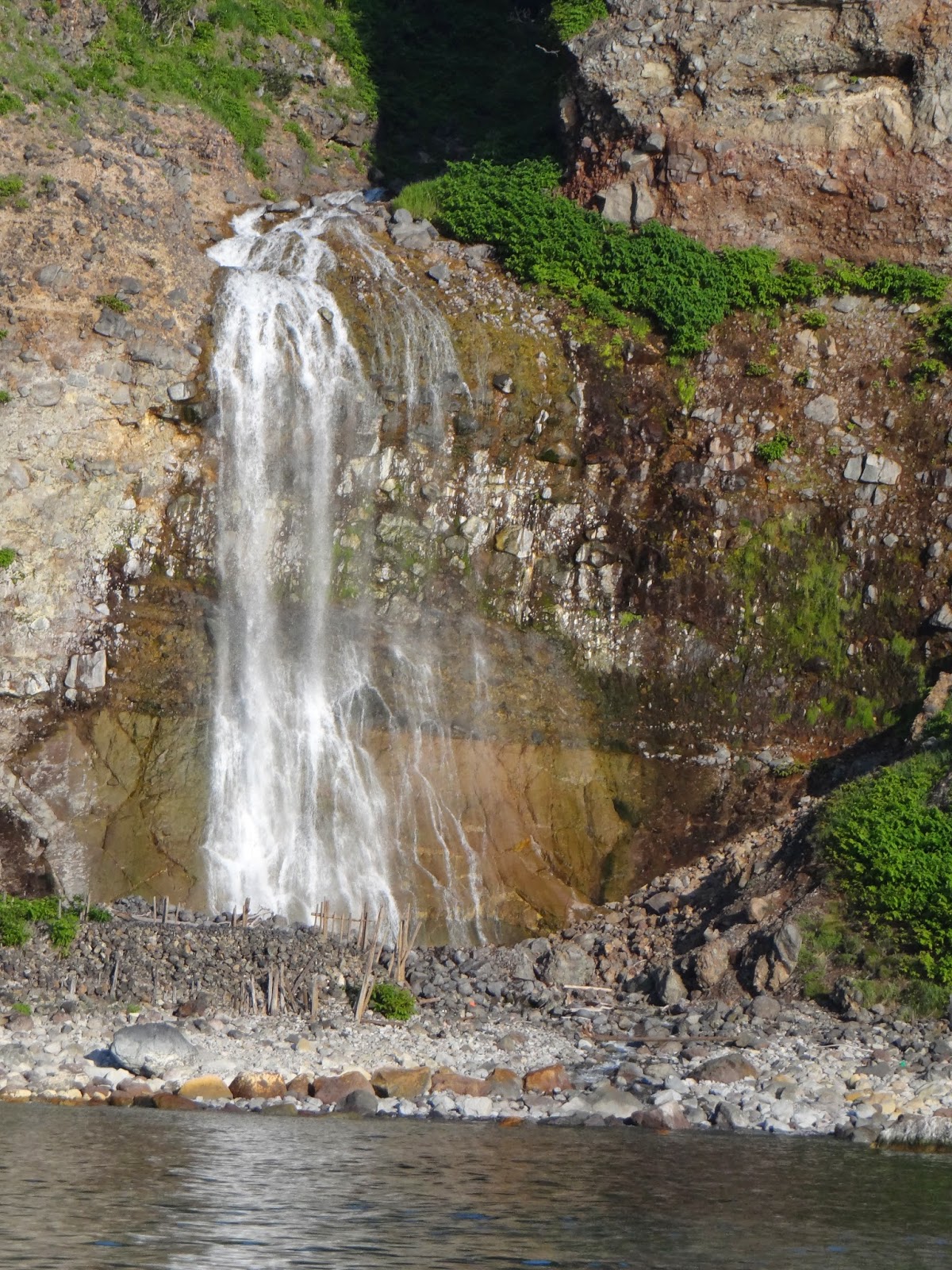





































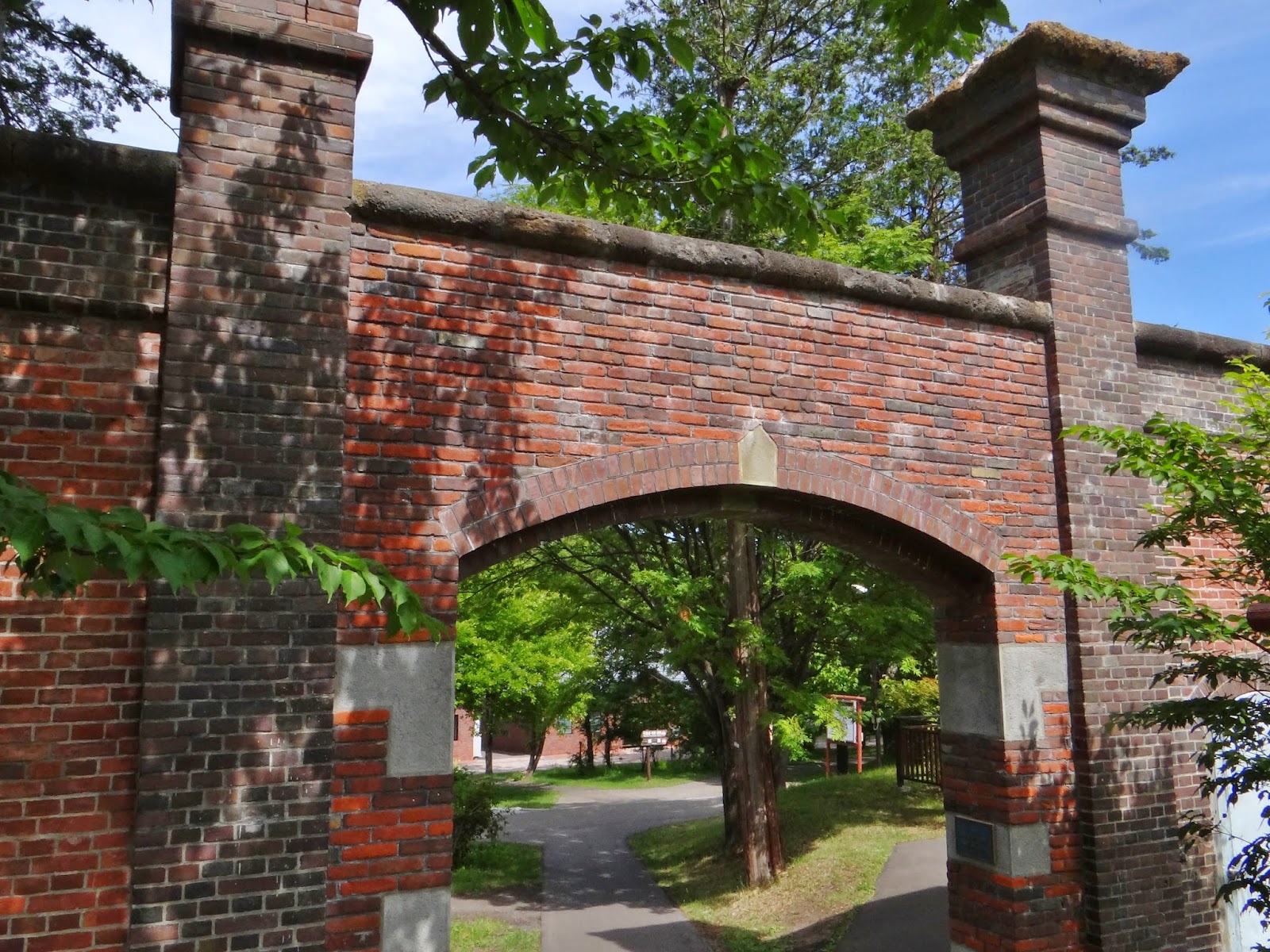



























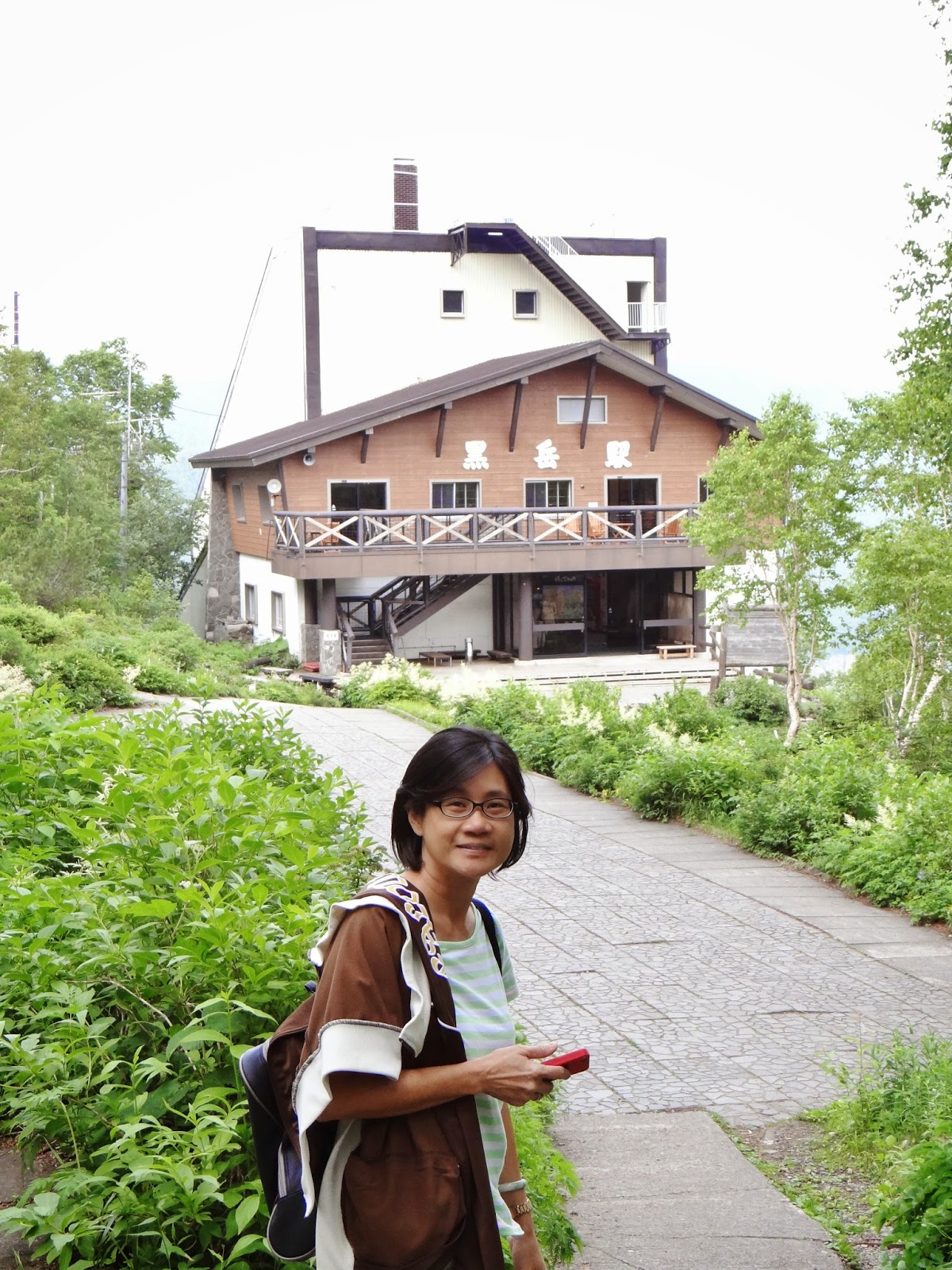






































Hi. I went to Hokkaido in August this year to visit a friend and her family in Muroran and really loved it. I've enjoyed following your trip. You saw a lot. I was lucky to be with a Hokkaido born person to show me around and take me to out of the way places I wouldn't seen if I was by myself. Have a read of my Muroran story my wordpress. I loved seeing some places you went to that we didn't have time to see but I would definitely return. The people, sights and food were fantastic. Cheers for sharing your holiday.
ReplyDeleteThanks for reading and leaving a comment.
DeleteHokkaido is indeed a wonderful place to visit. In fact, Japan in generally, is full of wonders (cultural architectures, national parks, and its onsens).
Heard autumn in Hoikkado is very enchanting as well. May visit in autumn in the future. Cheers.